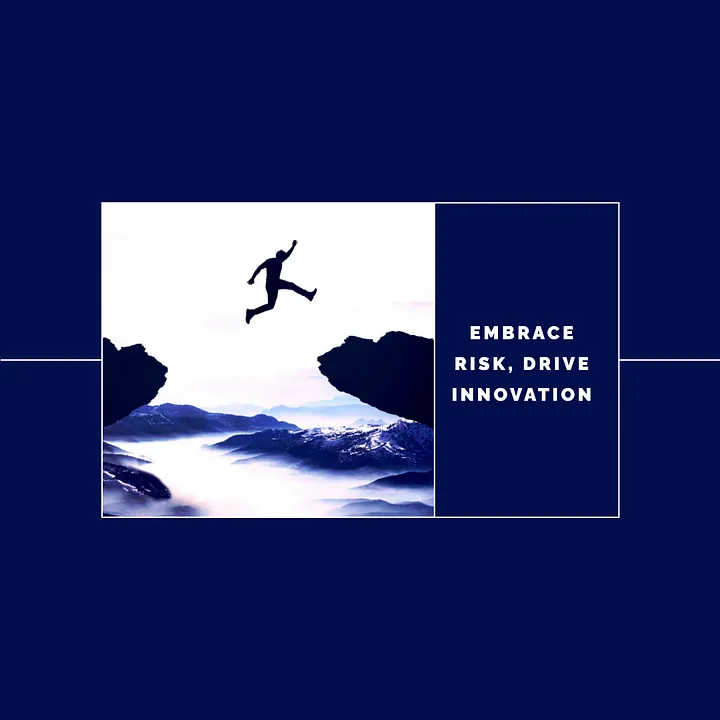Innovation is often seen as a cornerstone of progress and advancement, driving societal growth and economic prosperity. Whether it be the birth of the internet, the advent of smartphones, or the formulation of groundbreaking medical treatments, these transformative developments all share a common thread: they were born from a willingness to take risks. Through calculated risks, new ideas are explored, boundaries are pushed, and breakthroughs are achieved.
To understand the vital relationship between risk-taking and innovation, we must first define risk.
In its simplest form, a risk threat is the potential for loss or failure, and a risk opportunity is the potential for gain or success. Uncertainty and possible outcomes accompany any new venture or idea; however, it’s essential to differentiate between blind recklessness and calculated risk-taking. The most successful innovators do not dive headfirst into a void but carefully assess potential gains and losses, determining whether the risk is worth taking.
One area where risk-taking is evident is in entrepreneurship. Entrepreneurs are inherently risk-takers as they plunge into the unknown, hoping to turn their vision into a reality. They invest their time, money, and energy into an idea that may or may not succeed. Without these risk-takers, many transformative companies and technologies would never have come to fruition. Consider Elon Musk, the renowned entrepreneur and founder of Tesla and SpaceX. Musk took substantial financial risks early on, pouring millions of dollars into his ventures despite the uncertain outcome. Today, his innovations are revolutionising the automotive and aerospace industries. Without his willingness to take risks, these breakthroughs may have stayed as an idea or dream.
Taking risks also plays a significant role in scientific research and development. Scientists constantly push the envelope of knowledge, exploring uncharted territories and challenging prevailing scientific theories. However, this pursuit of innovation and progress is not without risks. Scientists often invest years in research projects that may yield unsatisfactory results or fail to produce tangible advancements. Yet, it’s through these failures that valuable insights are gained, leading to new inquiries and breakthroughs. Perhaps the most famous example is the story of Thomas Edison’s multiple attempts to invent the electric light bulb. Edison is rumoured to have said, “I have not failed. I’ve just found 10,000 ways that won’t work”. Each failure was not viewed as a setback but rather as a step closer to success, ultimately resulting in one of the most transformative inventions in history.
Beyond individual endeavours, risk-taking on a broader societal scale is critical for progress. Governments and policymakers must be willing to take risks to drive innovation and foster economic growth. This could involve investing in new and untested technologies, supporting budding entrepreneurs financially, and embracing regulatory frameworks that encourage exploration and experimentation. Singapore, for example, has positioned itself as a leading innovation hub through targeted government initiatives. By investing heavily in research and development and creating a supportive environment for startups and entrepreneurs, Singapore has experienced significant economic growth. It has become a magnet for investment and innovation.
Nonetheless, it’s essential to acknowledge the potential downsides of risk-taking. Not all risks pay off, and failure is an unavoidable part of the process. Investments may be lost, and time and resources may be wasted. However, this very possibility of failure often drives innovation forward. The fear of failure can act as a catalyst, pushing individuals and organisations to be more creative, adaptive, and vigilant in their pursuit of success. As the saying goes, “The greatest risk is not taking any risk at all.” By embracing risk and continuously pushing boundaries, societies can propel themselves forward, fostering progress and breakthroughs.

Final Thoughts
Risk-taking is an inherent part of the innovation process. Without the willingness to take risks, groundbreaking ideas would remain unexplored, and progress would stagnate.
From entrepreneurs who bet their fortunes on visionary concepts to scientists who persistently challenge prevailing theories, progress is driven through calculated risk-taking. Governments and societies must also be willing to shoulder the risks associated with innovation, invest in new technologies, and create supportive environments for growth.
While the risks are ever-present, the potential rewards they offer in progress, breakthroughs, and societal advancement far outweigh the potential losses.






